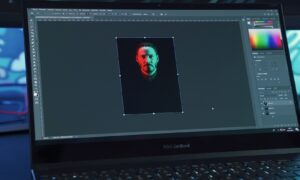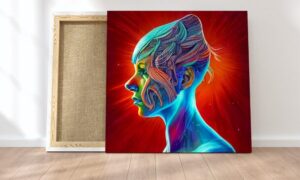Cartoon characters come in all shapes and sizes, from cute and cuddly to menacing and intimidating. While many popular characters are designed to be attractive and appealing, some animators have found success by creating characters that are intentionally ugly. These characters may be off-putting at first, but they often have a unique charm and appeal that makes them memorable and endearing. In this article, we will explore the world of ugly cartoon characters and examine why they are often beloved by fans.
Body: Part 1: The Appeal of the Ugly
To understand the appeal of ugly cartoon characters, it’s important to first consider why we find things ugly in the first place. According to evolutionary psychology, we are wired to find certain physical features unattractive because they are associated with traits that are not conducive to survival or reproductive success. For example, a face with asymmetrical features may suggest poor health or genetic defects, while an oversized nose may indicate a propensity for disease.
However, when it comes to cartoon characters, these evolutionary biases are not as relevant. Instead, we are drawn to ugly characters for different reasons. Here are some possible explanations:
- Quirkiness: Ugly cartoon characters often have exaggerated features that make them stand out from the crowd. These quirks can be endearing and make the character more memorable.
- Humor: Ugly characters are often used for comedic effect, as their appearance can be played for laughs. Their ugliness may also be used to subvert expectations and create surprise.
- Empathy: Ugly characters may evoke feelings of empathy in viewers, as they may identify with the character’s struggles to fit in or be accepted.
Part 2: Examples of Ugly Cartoon Characters
There are countless examples of ugly cartoon characters in popular media. Here are a few notable examples:
- Shrek: The titular character of the popular animated film franchise is an ogre with a large, misshapen head, bulging eyes, and a snub nose. Despite his initial gruff exterior, Shrek is a lovable character who learns to embrace his differences and find happiness.
- The Simpsons: The Simpson family is known for their distinctive yellow skin and exaggerated features, such as Homer’s overbite and Marge’s towering blue hair. While they may not be conventionally attractive, they have become some of the most beloved characters in television history.
- Ren and Stimpy: The titular characters of the popular ’90s cartoon are a psychotic chihuahua and a dimwitted cat, respectively. Both characters are designed to be repulsive and grotesque, with exaggerated facial features and strange body proportions.
- Gollum: The character from the Lord of the Rings franchise is a prime example of a character whose ugliness is used to create empathy. Gollum is a tortured soul whose physical appearance reflects his inner turmoil, with a gaunt face, sunken eyes, and emaciated body.
Part 3: The Art of Ugliness
Creating an effective ugly cartoon character requires a delicate balance between repulsiveness and appeal. Too much of either can result in a character that is forgettable or unlikable. Here are some tips for creating an effective ugly cartoon character:
- Exaggerate distinctive features: To make an ugly character stand out, animators often exaggerate one or two of their features to make them more distinctive. This can be anything from a crooked nose to a lopsided smile.
- Use color and texture: Ugly cartoon characters are often designed with unique textures and colors that add to their grotesque appearance. This can include bumpy skin, scraggly hair, or mismatched clothing. These details can help to make the character more visually interesting and memorable.
- Emphasize personality traits: Ugly cartoon characters are often given distinct personality traits that make them endearing to audiences. For example, a character may be gruff on the outside but have a heart of gold, or they may be socially awkward but have a great sense of humor. These traits can make the character more relatable and likable, despite their appearance.
- Subvert expectations: Ugly cartoon characters can be used to subvert audience expectations and create surprise. For example, a character who looks menacing may turn out to be kind-hearted, or a character who looks innocent may have a dark side. These twists can make the character more interesting and unpredictable.
Conclusion:
While ugly cartoon characters may not be conventionally attractive, they have a unique appeal that has captured the hearts of fans around the world. Whether they are quirky, humorous, or empathetic, these characters have proven that ugliness can be just as endearing as beauty. As animators continue to push the boundaries of character design, it’s likely that we will see even more ugly characters that capture our imaginations and steal our hearts.



































